The Fluffiest Homemade Semola Pasta Recipe Everyone Will Love
Crafting a delightful semola pasta brings pure culinary joy to home kitchens everywhere.
Culinary magic starts with simple, high-quality ingredients and a dash of creativity.
Mediterranean traditions inspire this classic dish that feels both comforting and exciting.
Wheat’s golden grains transform into delicate strands promising incredible flavor experiences.
Subtle textures and rich aromas make every bite memorable and satisfying.
Skilled cooks understand that perfect pasta requires patience and attention to detail.
You’ll love how these simple techniques create something extraordinary on your plate.
Semola Pasta For True Homemade Comfort Food
Ingredients Needed For Semola Pasta Mastery
Flour Base:Binding Ingredients:Finishing Ingredient:How To Prepare Classic Semola Pasta Easily
Step 1: Create Flour Volcano
Place semola flour on a clean, flat surface and shape it into a mountain-like mound with a deep crater in the center.
This technique helps contain the eggs and makes mixing easier.
Step 2: Crack Eggs Into Flour Crater
Gently crack fresh eggs directly into the center of the flour volcano.
Ensure no shell fragments fall into the mixture.
Step 3: Blend Ingredients Gradually
Using a fork, slowly incorporate the eggs into the surrounding flour.
Start from the center and gradually pull flour from the edges, creating a gradual mixing process.
Continue blending until a shaggy dough begins to form.
Step 4: Transform Dough With Hands
Switch from fork to hands, kneading the mixture thoroughly.
Push, fold, and press the dough consistently for approximately 10 minutes.
The goal is achieving a smooth, elastic texture that springs back when touched.
Step 5: Allow Dough Relaxation
Wrap the prepared dough completely in plastic wrap.
Let it rest at room temperature for 30 minutes.
This resting period allows gluten to develop and makes rolling easier.
Step 6: Roll And Shape Pasta
Use a pasta machine or rolling pin to stretch the dough into thin sheets.
Cut into desired shapes like fettuccine, linguine, or ravioli.
Maintain consistent thickness for even cooking.
Step 7: Prevent Sticking
Sprinkle additional semola flour over the cut pasta to prevent pieces from clumping together.
Separate strands gently to maintain their individual shape.
Simple Tips For Perfect Semola Pasta Texture
Fresh Variations For Semola Pasta Recipes
Serving Semola Pasta For Family Gatherings
Storing Semola Pasta To Maintain Its Freshness
FAQs
Semola flour is a coarse, high-protein wheat flour made from durum wheat. It provides a golden color, unique texture, and superior structure to pasta, making it ideal for creating authentic, traditional Italian pasta with a firm bite.
When kneading, the dough should become smooth, elastic, and no longer sticky. If you can stretch a small piece of dough without it breaking immediately, you’ve likely kneaded it sufficiently. The process typically takes about 10 minutes of consistent, firm kneading.
Yes, you can roll out the dough by hand using a rolling pin. Work on a lightly floured surface and aim for an even, thin thickness.
Print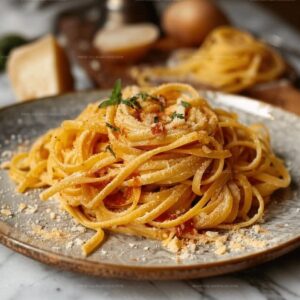
Semola Pasta Recipe
- Total Time: 48 minutes
- Yield: 10 1x
Description
Semola pasta brings Italian culinary magic to your kitchen, promising a delightful journey through traditional flavors. Handcrafted with passion and simple ingredients, this recipe connects you to generations of Mediterranean cooking tradition.
Ingredients
Pasta Ingredients:
- 1 kg (2.2 pounds) caputo semola flour
- 10 whole eggs
Dusting Ingredient:
- Extra caputo semola flour
Optional Finishing Ingredients:
- Salt (to taste)
Instructions
- Pile semola flour onto a pristine work surface, forming a crater-like depression in the center.
- Delicately crack eggs into the flour’s hollow, ensuring yolks remain intact.
- Using a fork, gently incorporate eggs into surrounding flour, methodically blending from the center outwards until a shaggy dough emerges.
- Transfer dough onto the work surface and knead vigorously, applying firm pressure and folding techniques for approximately 10 minutes until texture becomes smooth and cohesive.
- Encase dough completely in transparent plastic membrane, allowing it to relax and hydrate at room temperature for half an hour.
- After resting, utilize a pasta machine or rolling pin to stretch dough into thin, uniform sheets, ensuring consistent thickness throughout.
- Transform sheets into desired pasta silhouettes – whether fettuccine, tagliatelle, or ravioli – using specialized cutters or sharp knife.
- Liberally dust freshly cut pasta with additional semola flour, preventing potential adhesion and maintaining individual pasta strands’ separation.
- Cook immediately in generously salted boiling water for 2-3 minutes, or allow pasta to air-dry for future culinary adventures.
Notes
- Select high-quality, fresh eggs at room temperature for the richest flavor and smoothest dough texture.
- Work on a clean, spacious wooden surface or marble countertop to prevent the dough from sticking and ensure easier kneading.
- Use extra semola flour sparingly during rolling to maintain the pasta’s delicate texture and prevent dryness.
- Allow sufficient resting time for gluten development, which creates a more elastic and tender pasta with better bite and mouthfeel.
- Prep Time: 45 minutes
- Cook Time: 3 minutes
- Category: Lunch, Dinner
- Method: Rolling
- Cuisine: Italian
Nutrition
- Serving Size: 10
- Calories: 327
- Sugar: 0.3 g
- Sodium: 2 mg
- Fat: 7.5 g
- Saturated Fat: 2.3 g
- Unsaturated Fat: 4.8 g
- Trans Fat: 0 g
- Carbohydrates: 56 g
- Fiber: 3.6 g
- Protein: 14 g
- Cholesterol: 186 mg

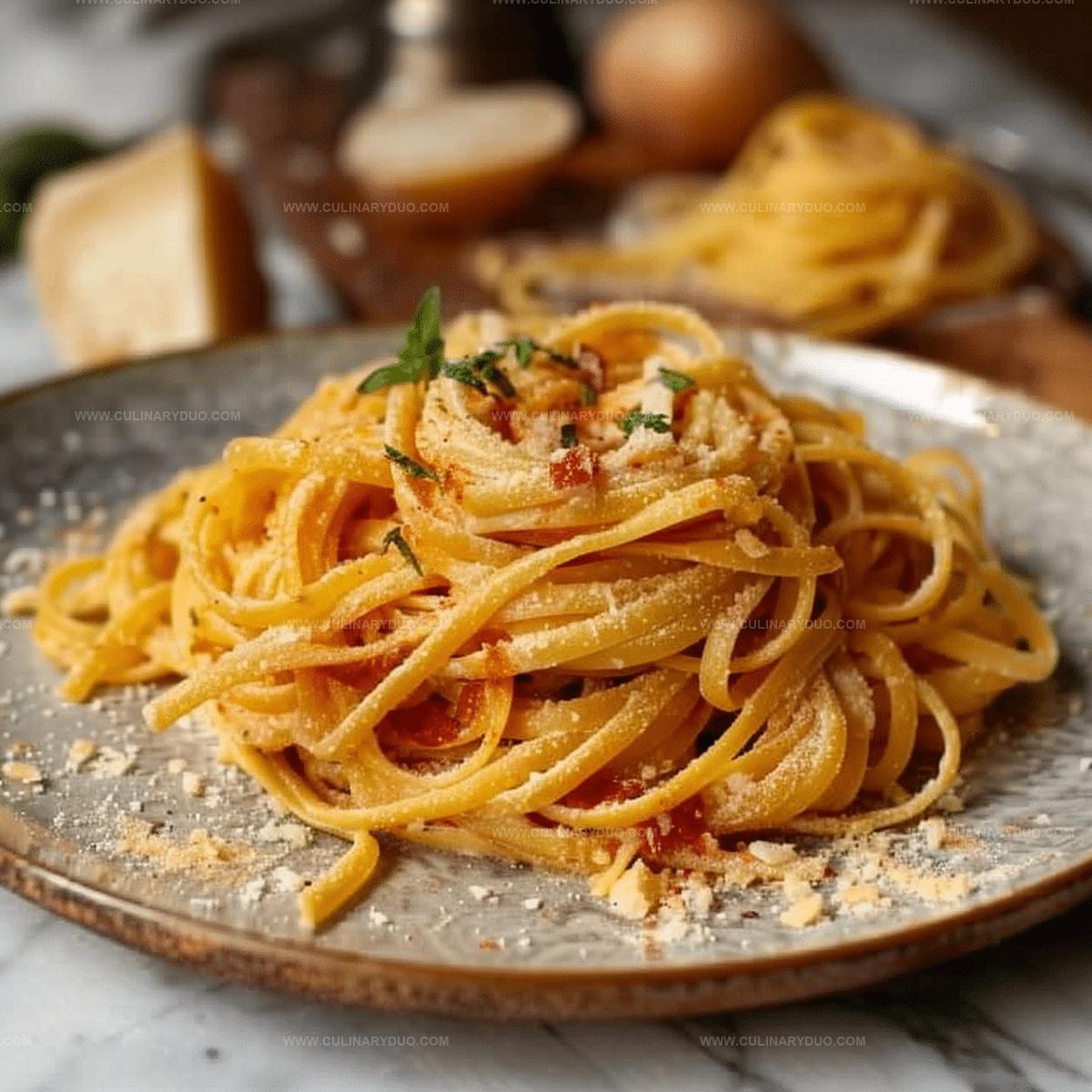
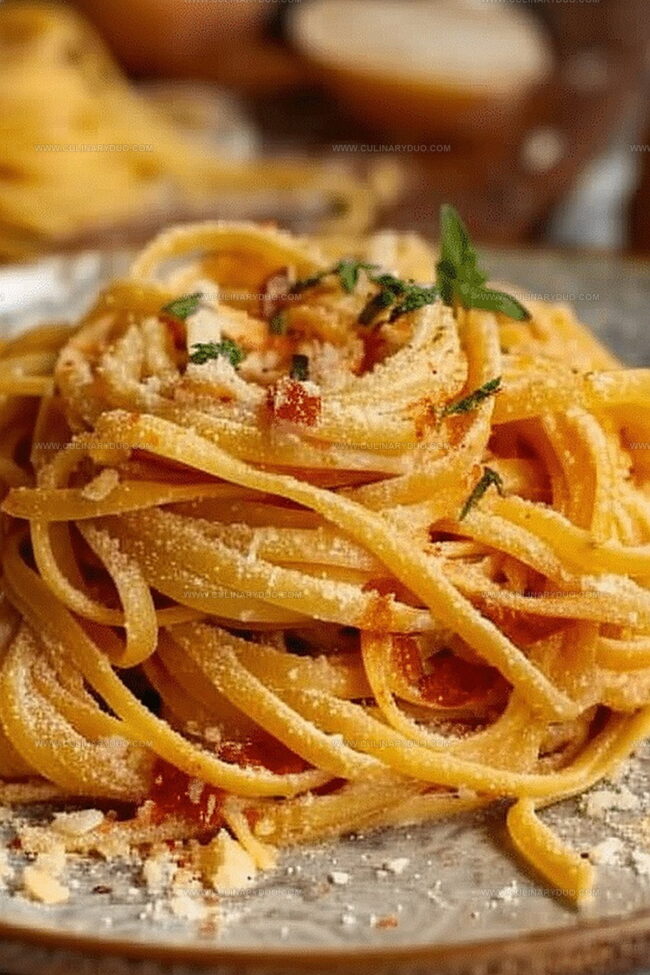
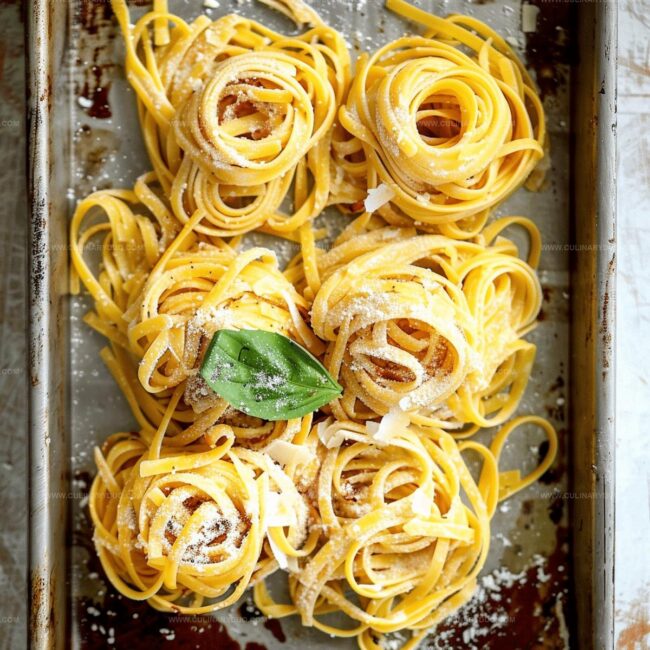
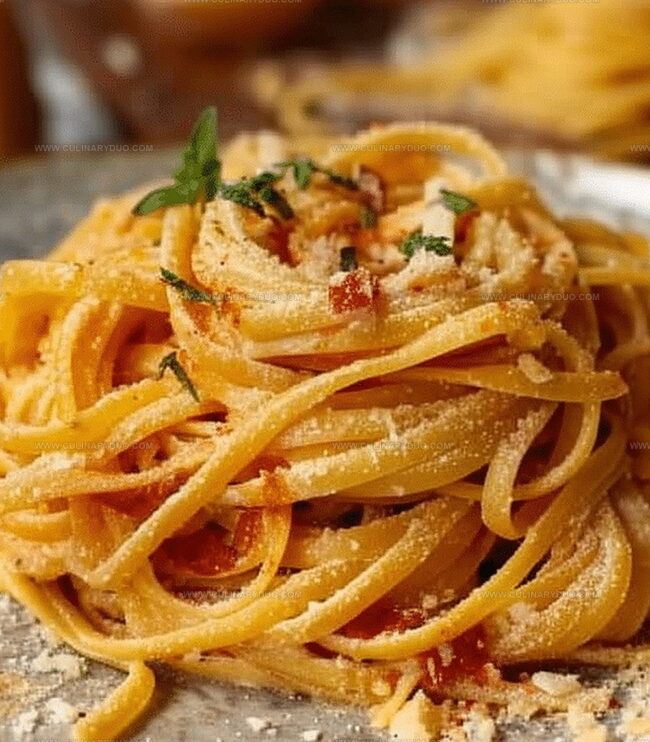
Natalie Brooks
Co-Founder & Content Strategist
Expertise
Education
eCornell
Natalie brings the vibrant, plant-powered side to Culinary Duo. After earning her Plant-Based Nutrition Certificate from eCornell, she combined her love for fresh ingredients with a passion for storytelling, aiming to make healthy cooking simple and satisfying.
Her kitchen motto: good food doesn’t need a fancy label, it just needs fresh ideas and a little creativity. Outside of writing and recipe testing, Natalie’s happiest in her garden, exploring farmers’ markets, or mixing global flavors into new kitchen experiments.